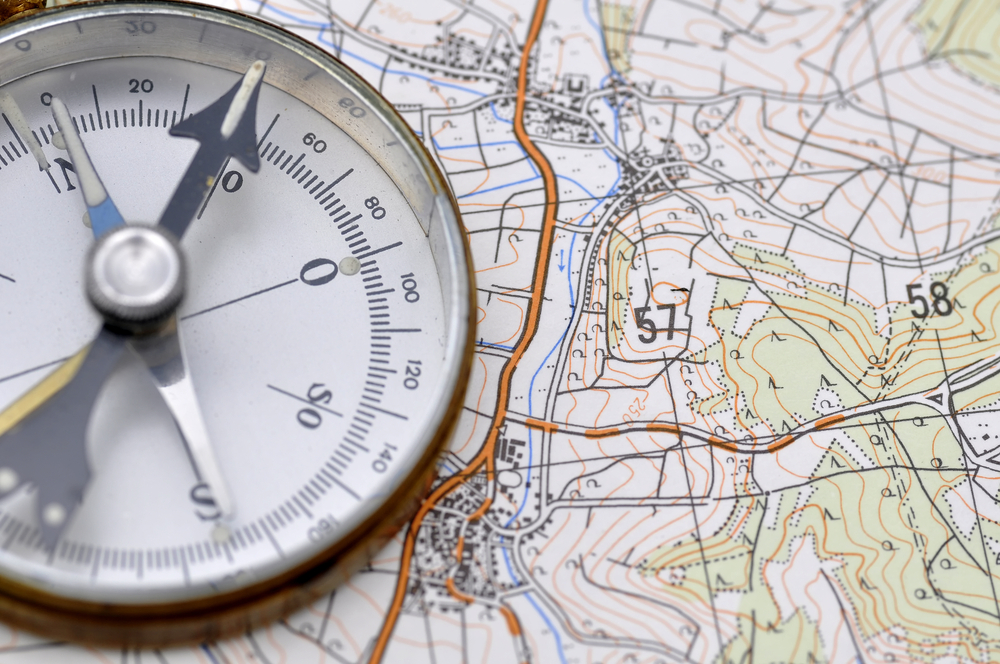What Is Whole Circle Bearing For Surveying?

Surveying is a fundamental aspect of civil engineering, essential for mapping and determining the precise locations of points on the Earth’s surface. Whole circle bearing is a common method used in surveying to express the direction of a survey line relative to a reference direction. In this article, we’ll explore the concept of whole circle bearing, its significance in civil engineering surveying, and how it helps determine the direction of a survey line accurately.
What is Whole Circle Bearing?
Whole circle bearing, also known as azimuth or compass bearing, is a method used to express the direction of a survey line as an angle measured clockwise from a reference direction, typically the north direction. Unlike quadrant bearing, which divides the circle into four quadrants, whole circle bearing covers the entire 360 degrees of a circle, providing a more comprehensive representation of direction.
Components of Whole Circle Bearing
To understand whole circle bearing fully, it’s essential to grasp its components:
Reference Direction
The reference direction for whole circle bearing is usually the north direction, although it can vary depending on the surveying convention or project requirements. North is typically designated as 0 or 360 degrees, with directions measured clockwise from north.
Angle of Rotation
The angle of rotation represents the direction of the survey line relative to the reference direction. It is measured clockwise from the reference direction, ranging from 0 to 360 degrees. Each degree of rotation corresponds to a specific direction on the compass, allowing surveyors to accurately describe the orientation of survey lines.
Significance in Civil Engineering Surveying
Whole circle bearing plays a crucial role in civil engineering surveying for several reasons:
Accurate Directional Representation
Whole circle bearing provides a precise and standardized method for expressing the direction of survey lines. By using angles measured in degrees, surveyors can communicate directional information consistently, facilitating accurate mapping, construction, and land development projects.
Compatibility with Mapping Systems
Whole circle bearing aligns with mapping systems and geographic coordinate systems used in civil engineering and geospatial applications. By referencing directions to the cardinal points of the compass (north, east, south, west), survey data can be seamlessly integrated with mapping software and geographic information systems (GIS), ensuring compatibility and consistency in spatial data analysis.
Flexibility in Field Measurements
Whole circle bearing allows surveyors to measure and record directions in the field quickly and efficiently. With the aid of compasses, theodolites, or electronic surveying instruments, surveyors can determine bearings accurately, even in challenging terrain or adverse weather conditions. This flexibility enables efficient data collection and surveying operations in various environments.
Calculating Whole Circle Bearing
Calculating whole circle bearing involves determining the angle of rotation between the survey line and the reference direction. This angle is measured clockwise from the reference direction to the survey line. The resulting bearing is expressed in degrees, with values ranging from 0 to 360 degrees, covering the entire circle.
Example of Whole Circle Bearing
Suppose a survey line has a whole circle bearing of N 45° E. This indicates that the direction of the survey line is 45 degrees east of north. Similarly, a bearing of S 30° W would mean the direction is 30 degrees west of south. By specifying both the cardinal direction and the angle of rotation, whole circle bearing provides a comprehensive description of directional orientation.
Conclusion
Whole circle bearing is a fundamental concept in civil engineering surveying, providing a standardized method for expressing the direction of survey lines relative to a reference direction. By using angles measured in degrees, surveyors can accurately communicate directional information, ensuring compatibility with mapping systems and facilitating efficient field measurements. Understanding whole circle bearing is essential for civil engineers, land surveyors, and professionals involved in mapping, construction, and land development projects, as it forms the basis for precise spatial data analysis and decision-making.
Need Land Surveyors in Texas?
At Smyth Surveyors, Inc., we offer professional, official, and dependable land surveying in Texas. Our staff are all trained and licensed with our owner holding an L.S.L.S license. We can offer surveying for gas and oil well locations, pipeline right-of-way acquisition and construction alignment, determination of original survey boundaries, title boundary surveys, topographic surveys, and construction staking. If you are looking for a surveying company that has a prestigious record and an impeccable reputation look no further than Smyth Surveyors, Inc. Contact us today to speak with one of our friendly project managers and set up some time with us!